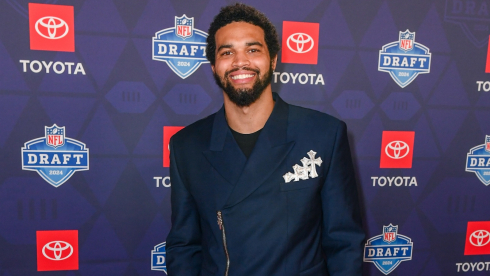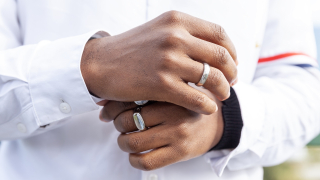Hours after James Blake was body-slammed to the sidewalk and handcuffed by an undercover NYPD officer in a case of mistaken identity outside the ritzy Grand Hyatt Hotel in midtown Manhattan last week, the former tennis pro told reporters: “Hopefully there’s video of it and people can see what happened.”
Left unsaid, but clearly implied by Blake was that despite the goodwill that he’s garnered over the years as an upstanding public figure, he still needed the video to buttress his case in the court of public opinion.
And while Blake’s lifeline came via hotel surveillance video, there’s no denying that nearly 25 years after the notorious Rodney King police beating in L.A., the public’s ability to see videos potential misconduct – whether via body cams, dash-cams or cell phones – is an entirely new phenomenon. Yet prosecutors, defense attorneys and juries alike have increasingly come to expect video evidence in such cases.
But if the presence of a camera creates something of a visual record, then the absence of one has long had its share of consequences too. Unfortunately, that’s a lesson that I once learned firsthand.
I’m a native New Yorker. Yet in 2000, I was living in Atlanta and working as an entry-level employee for CNN. On an off day in March, I walked over to a restaurant that was roughly five minutes away from my apartment in Decatur. When I left the diner, I waited to cross the street from a parking lot. But suddenly, a man who was crouching behind a car suddenly leaped to my immediate left.
The man was actually a uniformed officer. I was startled and took a step backward. Just as quickly, two other uniformed officers rushed to my right, while screaming at me to get down to the ground. Before I realized what was happening, all three white officers were grappling with my arms, pinning me down on the sidewalk and placing me into handcuffs.
As a 22-year-old who had never been in trouble with the law, I was angry and scared to suddenly find myself in police custody. When I asked why I was in handcuffs, the officers refused to answer. I was then placed in front of a squad car and told to place one ankle over the other or risk being kicked in the face.
As one officer dug into my pockets and pulled out my wallet, he asked me of my whereabouts. My answer, however, didn’t satisfy the increasingly agitated officer. “You met someone!,” he insisted. “Tell me who you met with!” Another officer retrieved, but made no mention of my dinner inside a brown paper bag, which had fallen to the ground.
It wasn’t long before a supervisor pulled up to the scene in a squad car. He began to angrily question me. The supervisor told me that he would run a check on my name to see if any outstanding warrants existed. I told him that I had never been in trouble with the law and that nothing would turn up.
As I sat there, with my arms behind my back and shivering in the late winter chill, I was furious and frightened as I watched the flow of road traffic. But just as quickly as the nightmarish sequence of events unfolded, the tone of the officers would change just as abruptly. Their aggressive stance suddenly transformed into what can best be described as a tone of paternalism. It was clear to me that my CNN ID had been spotted as I heard one officer say to another, “He’s an important person.”
Ten minutes after the officers initially rushed me, the handcuffs were removed. One officer told me that if I simply complied with his instructions to show my ID, then I wouldn’t have been detained. I demanded to know why I was rushed and restrained with handcuffs. “Why don’t you trust police?” the officer shot back.
I received no apology. And I was never told why I was confronted in the first place – at least until I read the disorderly conduct summons that was given to me. “During a narcotics investigation, [Mr. Stephen] was stopped. Upon asking for ID, he turned and attempted to flee into traffic,” the summons falsely concluded. (Months later, I appeared in court to contest the charge. But it was dismissed.) At the time, I briefly flirted with pursuing legal action of my own before ruling it out since I was on the verge of returning to New York and simply wanted to move on. But I also doubted that my account could actually be proven. Had I known that a video existed, I likely would have had a different mindset in the aftermath of the incident.
Absent a video, it’s my memory that instead serves as the closest thing to seeing it again. Interestingly enough, it’s worth noting that commissioners in Dekalb County, Ga. – where the incident occurred – passed a $1.33 mid-year billion budget in July that includes pilot funds for a police body cam program. As residents and officers alike are discovering nationwide, it’s a practice that can’t start soon enough.
Curtis Stephen is a award-winning New York City journalist. Through the years, his work has appeared in the Daily Beast, Newsweek, Newsday, AM New York, the Crisis magazine, and City Limits magazine. Currently, he’s writing a biography on the late New York radio deejay Frankie Crocker. His other works can be found on his site.













